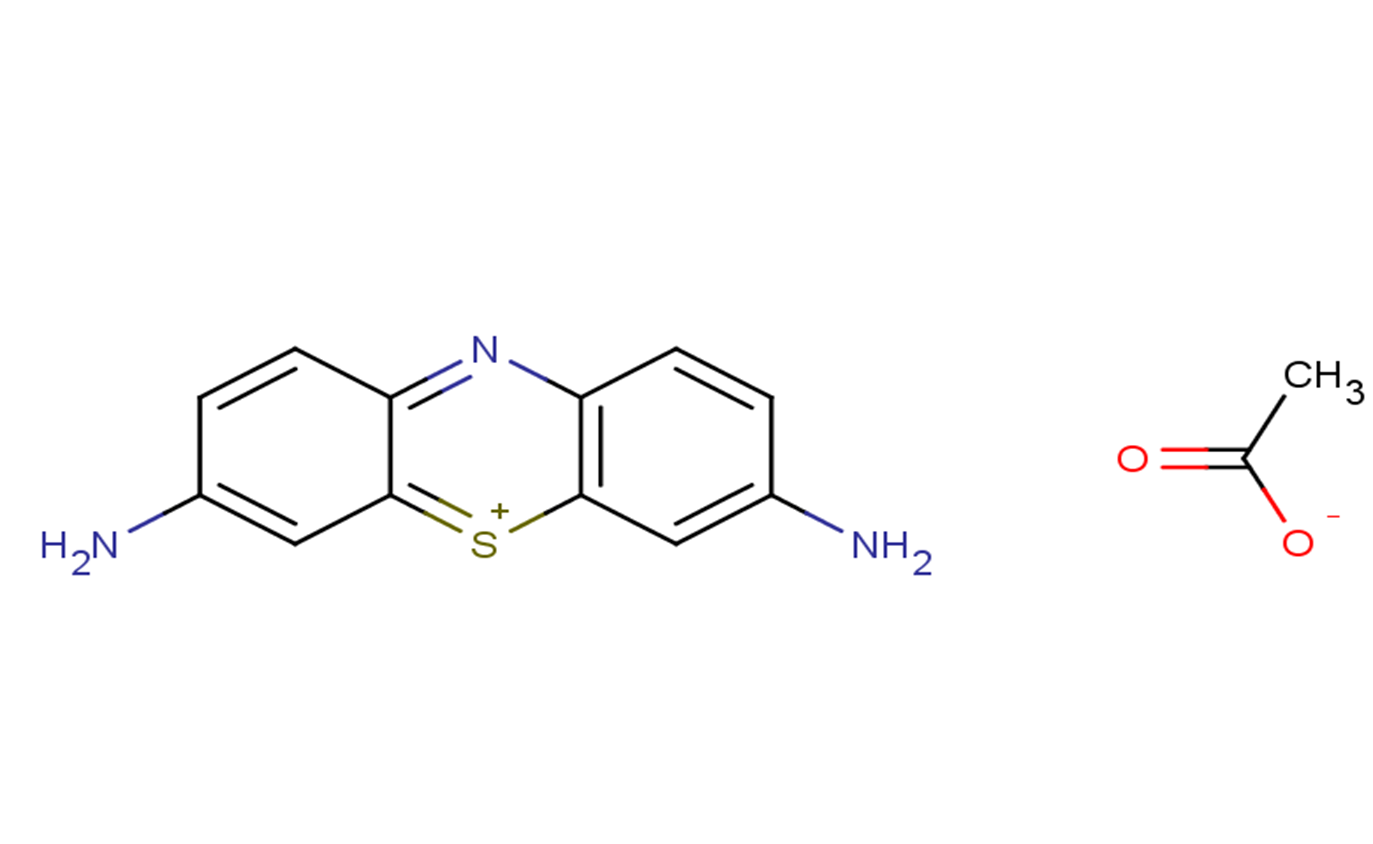
Thionin acetate
CAS No. 78338-22-4
Thionin acetate( Thionine acetate )
Catalog No. M24783 CAS No. 78338-22-4
Thionin acetate is a metachromatic cationic histology dye used in biological staining widely.
Purity : >98% (HPLC)
 COA
COA
 Datasheet
Datasheet
 HNMR
HNMR
 HPLC
HPLC
 MSDS
MSDS
 Handing Instructions
Handing Instructions
| Size | Price / USD | Stock | Quantity |
| 500MG | 38 | In Stock |


|
| 1G | Get Quote | In Stock |


|
Biological Information
-
Product NameThionin acetate
-
NoteResearch use only, not for human use.
-
Brief DescriptionThionin acetate is a metachromatic cationic histology dye used in biological staining widely.
-
DescriptionThionin acetate is a metachromatic cationic histology dye used in biological staining widely.
-
In Vitro——
-
In Vivo——
-
SynonymsThionine acetate
-
PathwayOthers
-
TargetOther Targets
-
RecptorOthers
-
Research Area——
-
Indication——
Chemical Information
-
CAS Number78338-22-4
-
Formula Weight287.34
-
Molecular FormulaC14H13N3O2S
-
Purity>98% (HPLC)
-
SolubilityDMSO:41.67 mg/mL (145.02 mM; Need ultrasonic)
-
SMILESNC1=CC2=[S+]C3=C(C=CC(N)=C3)N=C2C=C1.CC([O-])=O
-
Chemical Name——
Shipping & Storage Information
-
Storage(-20℃)
-
ShippingWith Ice Pack
-
Stability≥ 2 years
Reference
1.Ribeiro L M , Herr S . The use of filter paper discs impregnated with thionin acetate, basic fuchsin and thionin blue in the identification of Brucella species[J]. The Onderstepoort journal of veterinary research, 1990, 57(3):197-199.
molnova catalog



related products
-
PAC1R antagonist 1
PAC1R antagonist 1 is an orally active PAC1 receptor antagonist that inhibits abnormal pain induced by pituitary adenylate cyclase-activating polypeptide (PACAP) and nerve damage, and may be used in the study of neoplasms and immune-related disorders.
-
MC1742
MC1742 is an inhibitor of class I histone deacetylases (HDACs; IC50s = 0.1, 0.11, 0.02, and 0.61 μM for HDAC1, -2, -3, and -8, respectively) and class IIb HDACs (IC50s = 7 and 40 nM for HDAC6 and HDAC10, respectively).
-
MART-1 (26-35) (huma...
MART-1 (26-35) (human) TFA is an amino acid residue of 26-35 protein.



 Cart
Cart
 sales@molnova.com
sales@molnova.com


